It’s a simple truth that you can’t swap a woven for a knit when making something. Knits stretch. Wovens don’t.
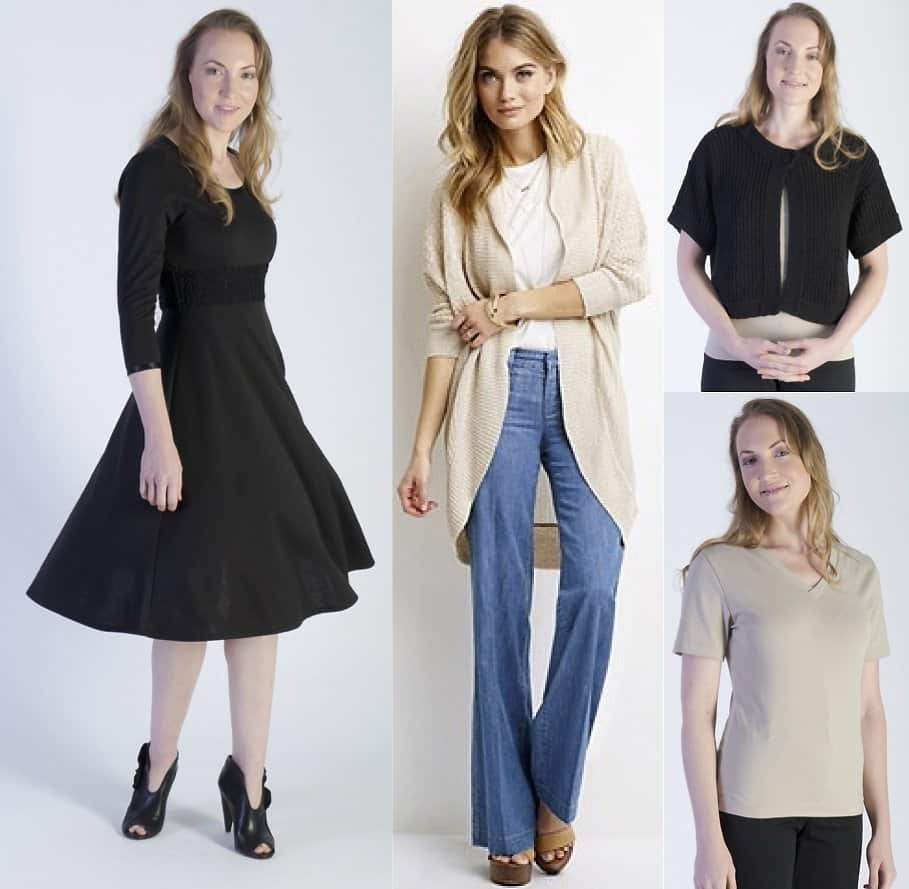
True, some wovens are blended with spandex (registered name: Lycra) to make them stretchy. But they still won’t stretch and behave the same way as knits. So if you substitute a knit for a woven, you’ll find the final garment is way too big. If you substitute a woven for a knit, you’ll find the final garment way too tight. That’s also why it is so difficult to sew a knit to a woven without the knit rippling.
Let’s take a look at the basics of how each is made.
WOVENS: In a basic plain weave, warp threads are laid vertically. Weft threads are woven horizontally through through the warp threads using a shuttle. Warp threads are very stable and do not stretch. Weft threads are looser and will have a bit of stretch.
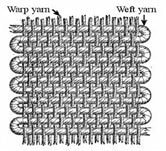 KNITS: With knits, the fibers are looped together. That gives the stretch. Stretch also makes knits harder to sew and control. The vertical column of loops is called a wale. The horizontal row of loops is called a course.
KNITS: With knits, the fibers are looped together. That gives the stretch. Stretch also makes knits harder to sew and control. The vertical column of loops is called a wale. The horizontal row of loops is called a course.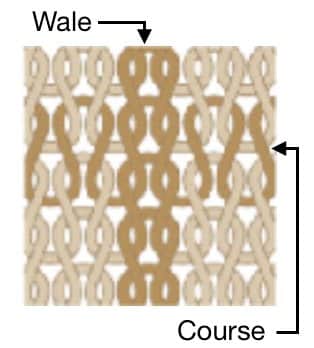
In a WEFT KNIT, such as hand-knitted fabric, a single yarn is looped repeatedly to create horizontal rows, or courses, with each row built on the previous row. This makes for a looser knit.
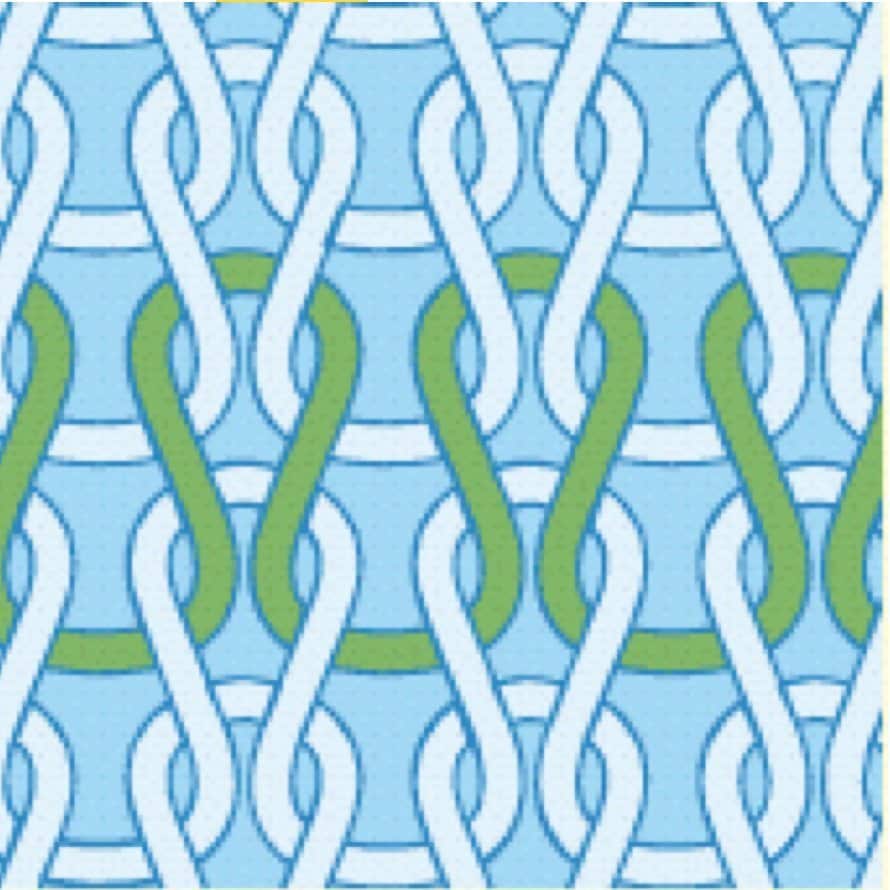
A WARP KNIT is made with multiple parallel yarns that are simultaneously looped vertically to form the fabric. This makes for a tighter knit.
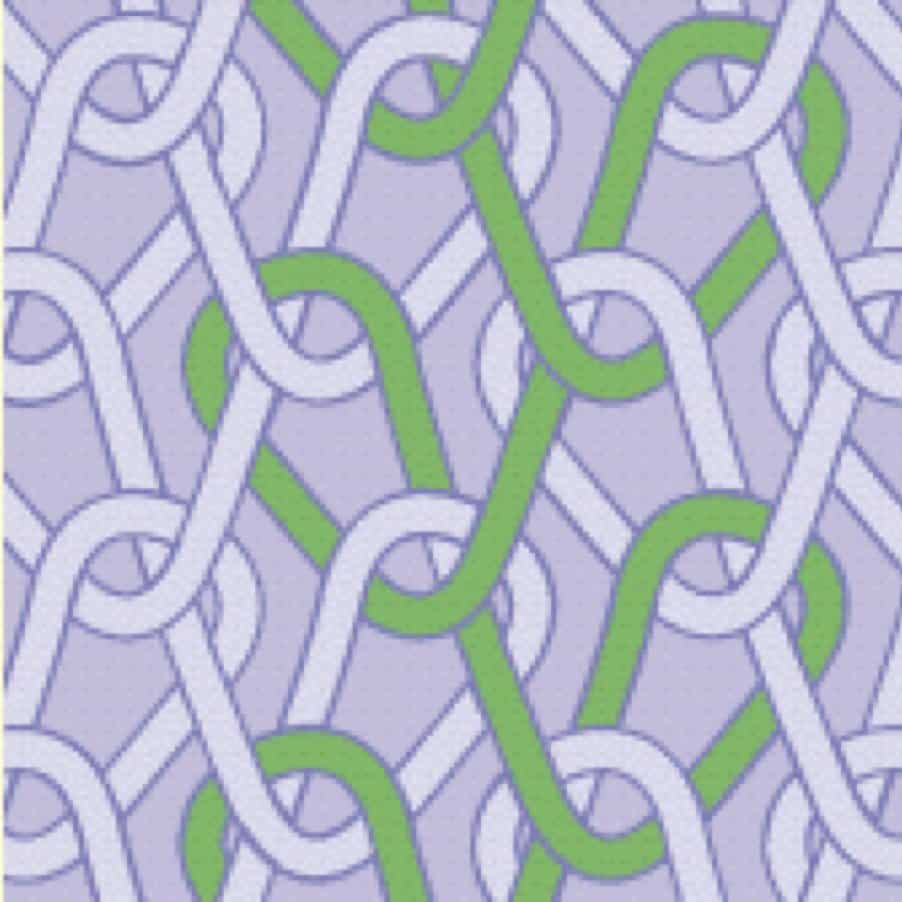
A two-way stretch knit gives significantly along the width of the fabric and a little along the length. Four-way stretch knit gives significantly along both the width and length of the fabric. Most often, four-way gets its stretch by adding spandex.
Knits, unlike wovens, do not fray.
The amount of stretch varies greatly depending on the knit. To assess the stretch, test a fold of the fabric on the crossgrain. Take a single layer between the thumb and forefinger of the left hand. Hold the fabric in the same way in the right hand three or four inches away. Lay the fabric on a ruler with the left hand at zero. Pull the fabric along the ruler with the right hand. Stop just at the point that you have to exert any effort.
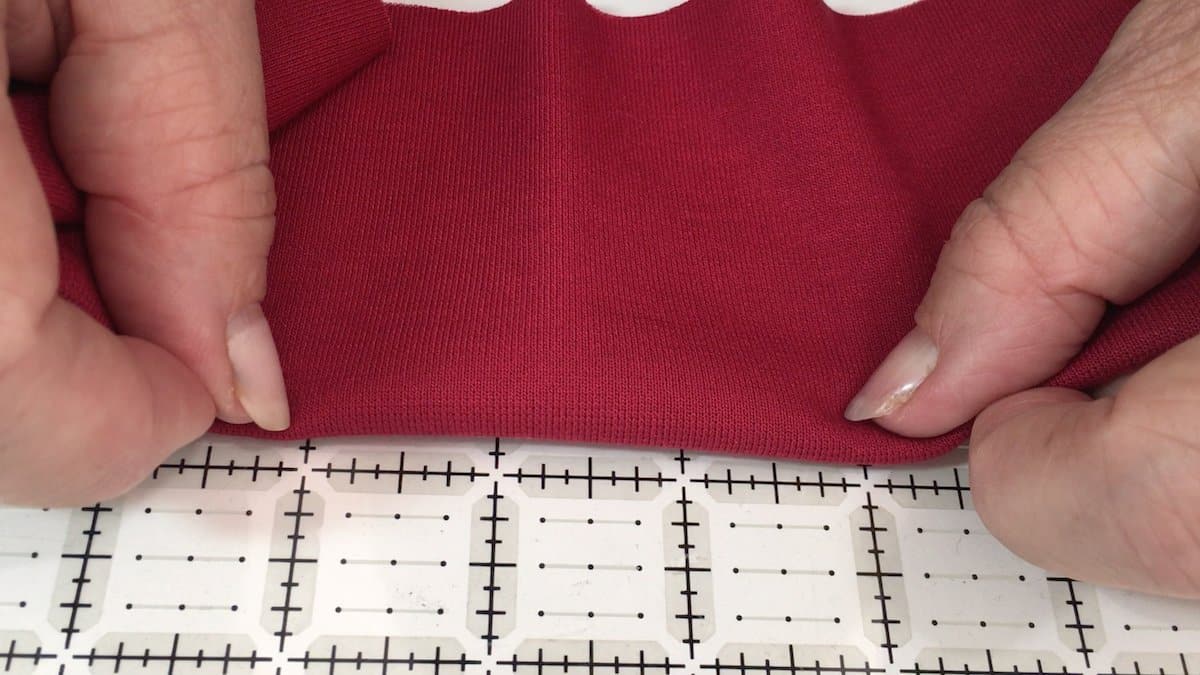
The amount of stretch determines how you use the knit. The words you find on a pattern tell you what kind of knit to use.
Stable. 4 inches of knit stretches to less than 1 inch (called 18% stretch ratio). Use this for jackets and pants or firm skirts and dresses. Typical fabrics: Weft knits such as Ponte, french terry and double knits.
Moderate. 4 inches of knit to 1-1½ inch (called 25% stretch ratio). Use this for dresses, beefy t-shirts.
Typical fabrics: Interlock
Stretchy. 4 inches of knit stretches up to 2 inches (called 50% stretch ratio). Use this flowy tops and dresses, thin t-shirts.
Typical fabrics: Jersey, ITY
Super-stretch. 4 inches of knit stretches another 3 inches (called 75% stretch ratio). Use this for very stretchy clothes such as activewear or cuffs and waistbands.
Typical fabrics: Performance, matte jersey, rib knits
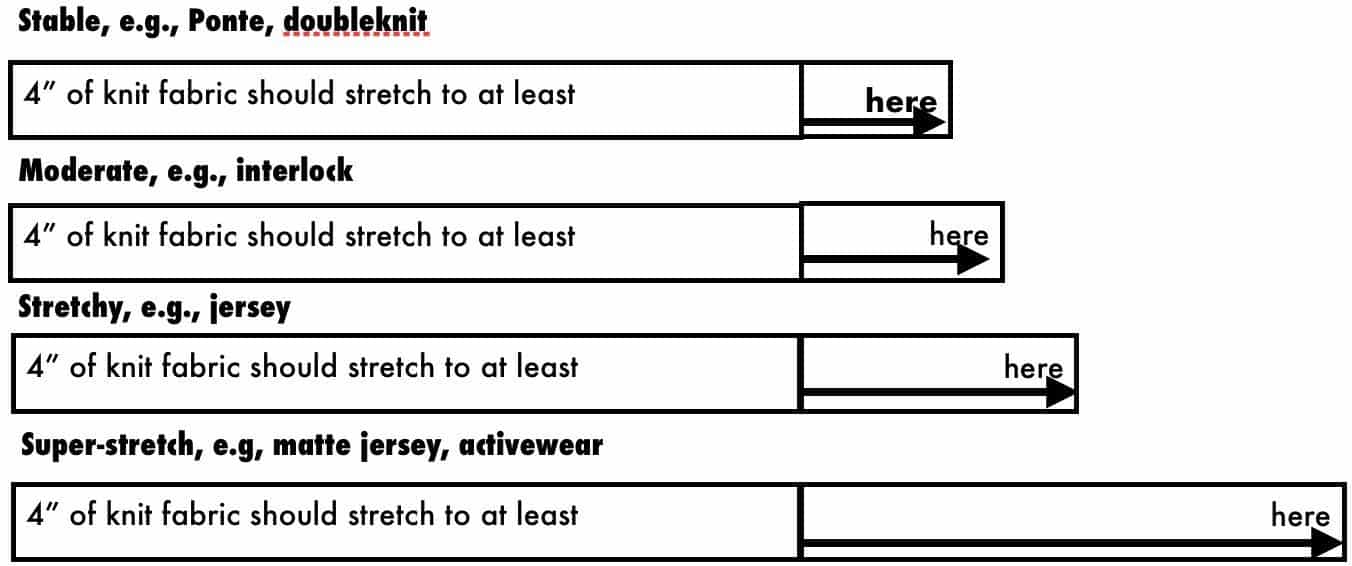
The tools and techniques you use to cut and sew knits are special to them. Most have been created since the 1970s when knits first became available to the sewing public. Look for those in the next blog.
We’ll follow that with a blog about the many kinds of knits you can find today.
Want know more knits? Sign up for Sewing Knits with Lisa. Choose either the morning or evening class. Next classes start in September. Click here!




